2021 Ford Mustang Mach-E Review: First Drive

I’m not going to tell you the Mach-E is the most important new vehicle Ford is launching this year. It isn’t: on a strictly numbers basis, that title belongs to the redesigned F-150, newly available in hybrid format. I don’t think the Mach-E has built up the most hype of the Blue Oval’s new batch, either. The reborn Bronco has avoided much of the controversy of this all-electric, four-door crossover. Blame the name: Ford must’ve known it’d rile up traditionalists by sticking that iconic horse badge on this EV. But long-term, the Mach-E has a much heavier burden than either of its siblings. Just as Star Wars redefined the Hollywood formula in 1977, the Mach-E needs to convince the public a mainstream legacy automaker can play in the EV realm.
Not wanting to belabor the point any longer, I’ll just say it: the Mach-E is good. It is very good, in fact. It isn’t perfect, but for a snow-filled two hours in the beginning of December, the Mach-E showed the way forward for Ford and the automotive industry at large, with clever technology, plenty of practicality, and—true to its name—even a bit of fun from behind the wheel.
Great shot, kid!
Like other EVs out there, the Mach-E carries most of its considerable weight down low, giving it a low center of gravity. That, combined with the instant-on torque of electric motors and a stabilizing long wheelbase, make it an easy car to exploit without getting into trouble. My tester is the Premium trim, with both the available AWD and upsized, range-extended battery. The important figures are 346 horsepower and 428 pound-feet of torque: Ford quotes a run to 60 mph (96 km/h) in the mid-fives, and even in the slush, I have little reason to doubt that.
The three available driving modes offer up noticeable performance shifts. Engage—read Normal—offers the expected balanced attitude, while Whisper is an eco-oriented setup with less pronounced coasting deceleration. Meanwhile, Unbridled is the Mach-E’s sport mode, amping up throttle response. The 10.2-inch display ahead of the wheel takes on a golden glow, and animates alongside the car’s speed. As the Mach-E goes faster, the orange light slowly expands further outward into the grid. It’s a cool visual touch that shows one of the small perks of our digital present.
FAST FACTS
| Motor: | 2x electric motors, 88 kWh battery pack |
| Output: | 346 hp, 428 lb-ft |
| Transmission: | 1AT, AWD |
| US fuel economy (MPGe): | 96/84/90 |
| CAN fuel economy (Le/100KM): | 2.4/2.8/2.6 (est) |
| Starting Price (USD): | $43,995 (inc. dest.) |
| As-Tested Price (USD): | $56,400 (inc. dest.) |
| Starting Price (CAD): | $52,395 (inc. dest.) |
| As-Tested Price (CAD): | $71,945 (inc. dest.) |
Unbridled also turns up the volume on the Mach-E’s piped-in engine noise. It’s a unique mix of typical EV hum and a bit of bassy V8 rumble, because of course, but it weirdly works. And if you’re not like me, a person of impeccable taste (or so I’ve never been told), you can always turn it off.
The Mach E’s reins are another high point. The steering is tight, with quick rotations and a reasonable amount of heft once some lock is applied. The faux-leather feels good as the wheel rotates through your fingers, too. Meanwhile the brake pedal is nice and firm, building confidence right from the first stop, though the transition from solely friction braking to both it and regenerative is abrupt. An available one-pedal mode amps up the regen, which works well for those that prefer that method.
SEE ALSO: 2021 Mini Cooper SE Review: Close But No CigarThe fresh snowfall gave me a prime opportunity to measure the EV’s range in colder temps. A Ford rep informed me that the Mach-E would be capable of its EPA-quoted 270-mile range (over 425 km), but that this pre-production model’s displayed range was incorrect. The remaining charge, however, was right on. In our short time together, I drove the Mach-E around 60 miles including a stop for photos, and returned it with 76-percent charge intact. That suggests it’d run very slightly shy of its quoted range, but that ain’t bad at all given the weather.
Ford provides a mobile charger with the Mach-E, capable of using both 120- and 240-volt outlets. You’ll probably want to skip the former, since it’d take about four days to fully charge the battery. 240-volt charging drops that to a little over 14 hours. Ford will also sell you a 48-amp charging station for your home, shaving another four hours off. Finally, the Mach-E is capable of DC fast charging at rates up t0 150 kW, which can add 60 miles of range in 10 minutes, or a charge up to 80-percent in 45. I wasn’t able to test any of this, of course.
That’s no Mustang (so say the cynics)
It’s impossible to compress a year’s worth of thoughts on the Mach-E into a few paragraphs. I understand the ire: I was part of that group when Ford pulled the sheet back in 2019. I’m still not completely sold on the looks. There are parts that work much better away from the autoshow circuit: the long headlights make it seem far wider than the Escape-equalling 74.1 inches (1,880 mm), and I personally dig the bisected take on the classic three-bar taillights, if not their clear lenses. The contrast between the white body and gloss-black edges visually lightens this electric pony, masking its Clydesdale-like curb weight. The dramatically tapering roofline works better than the German coupe-overs you find clogging up the left lane on the highway, but there’s still an uncomfortable amount of sheetmetal above and slightly behind the rear wheel arch. I find the low rear three-quarter a pretty flattering angle on most cars; that’s just not the case here.
What I appreciate here is that Ford hasn’t slavishly handcuffed itself into forcing all Mustang cues onto this vastly different shape. It’s bypassed the awkward first-Cayenne stage and moved right to the third-gen. Will people still balk at the name? Of course they will! And those same people were never going to consider buying this thing anyway, so it’s no loss to Ford. Meanwhile, the Mustang name is as familiar to tweens as it is octogenarians, and that will drum up interest in a way another name couldn’t.
One thing’s for sure, it drew a lot of looks downtown. If I had just two hours with the Mach-E, I wanted to gauge public opinion as efficiently as possible, so that meant driving right through the busiest intersection in the city. This is a place where even a Lamborghini Urus—or more pertinently, a Tesla Model Y—barely draws a second glance, and yet people are craning their necks and whipping out their phones for the Mach-E.
You can go about your business (inside)
If the exterior is a dramatic departure for the Ford faithful, wait until they push the B-pillar-mounted button, pull the bizarre door handle under it, and move inside the Mach-E. (There are no handles for the rear doors, only the electronic button.) A calming, well-lit cabin will greet them, thanks in no small part to the panoramic fixed-glass roof. The dashboard design is simple, with Ford adopting the popular semi-hidden vent approach from door to door. Above are two sections of textured cloth, the sort you want to brush your hand over. Below is a carbon-fiber-like pattern, with inset strips of stitched faux-leather. The overall design doesn’t feel as special as something like the Polestar 2, but it has enough charm to make the Model Y seem austere. And sitting smack-dab in the middle of it all is a honking big 15.5-inch portrait-oriented touchscreen.
SEE ALSO: 2021 Polestar 2 First Drive ReviewThat screen handles just about every function within the Mach-E. Its size is both a blessing and a curse: it puts out a lot of light, which could make it a distraction at night, but it’s big enough that every button is easy to read with just a quick glance. SYNC 4 is a snappy operating system too, responding quickly to prods and voice commands alike. The system also keeps the most recently used apps visible, so swapping is only one tap away. User profiles allow for saved settings for multiple drivers as well.
The native navigation system will automatically include charging stations on longer trips, which is a nice touch. Perhaps most importantly, though, climate controls remain a permanent fixture on-screen, and there’s a physical volume knob mounted right on the glass. If you’d prefer, both Apple CarPlay and Android Auto can wirelessly shack up with the big screen too. When you’re away from the Mach-E, you can use the FordPass app to check the car’s vitals, and even precondition the battery ahead of a drive.
SEE ALSO: 2020 Ford Escape Hybrid Review: Friendly Fuel-SipperThanks to a long, long wheelbase of 117.5 inches (2,972 mm), the interior feels spacious in either row. The front seats are power-adjustable, and the vegan material—this is an eco-conscious vehicle, after all—is convincing. In fact, I prefer it on the steering wheel to the actual leather on the Escape’s rim. That roofline might suggest ducking second-row riders, but it’s an optical illusion: the black section runs more horizontally for longer, affording me with enough head space “sitting behind myself.” Fit and finish is generally good, especially for a pre-production model: nothing rattles or shakes across the slushy roads.
Out back, there’s 29.7 cubic feet (840 liters) out back, which essentially doubles to 59.7 (1,690) when you drop the second row. There’s another 4.7 cubes (136 liters) up front too. Added all up, it’s less than the Model Y, and in fact ever so slightly less than the Escape.
Pricing and availability
Mach-Es have begun trickling into dealerships as you read this. The entry-level Select trim, which is only available with the standard-range battery, begins at $43,995 ($52,395 CAD), including destination but not including any green-car incentives. Move up to the Premium trim like this tester, and you’ll find a $48,100 ($60,645 CAD) sticker for the rear-drive, standard-range model. Upgrading to the AWD costs $2,700, while dropping in the larger 88 kWh battery is an even $5,000 ($3,500 and $,7000 CAD, respectively). The California Route 1, which is only available in rear-drive, extended-battery setup, goes for $50,900 ($65,645 CAD).
Around summer time, Ford will unleash the Mach-E GT and GT Performance, boosting power to up to 480 ponies, and a massive 634 lb-ft of torque.
Verdict: 2021 Ford Mustang Mach-E First Drive Review
I wasn’t around when Star Wars released. So I talked to the closest person I knew who was, to get a better idea of the impact during the summer of ’77: my dad. “That jump to light speed, nobody did that before,” he said over the phone. “It was a different world for what they did, a new take on filming. They had to create it, there were entire industries built out of Star Wars.” It wasn’t the first sci-fi film by a long shot, but it indelibly changed how the public saw the genre.
After the Mach-E’s own 121-minute performance, the parallels are clear. This isn’t the first EV compact crossover, either. But it’s the first serious go by one of the biggest, most experienced automakers in the world. The Mustang portion of its name is part marketing stunt, but there’s substance here: the Mach-E is playful in the snow, exhibiting the sort of dynamics you associate more with high-end sporty-ish crossovers than anything from the mainstream. It’s no one-trick pony either, able to near-silently waft its passengers around, all within the comfort of a tidy, airy cabin. The Mustang Mach-E will have many folks reconsidering their stance on EVs, offering a compelling package that doesn’t sacrifice anything from a “normal” car. The force is strong with this one.
Become an AutoGuide insider. Get the latest from the automotive world first by subscribing to our newsletter here.
LOVE IT
- Calming interior
- Enjoyable handling/ride balance
- Angers the traditionalists
LEAVE IT
- Looks are still a little awkward
- Higher trims get pricey
- Can't match Model Y's figures

Kyle began his automotive obsession before he even started school, courtesy of a remote control Porsche and various LEGO sets. He later studied advertising and graphic design at Humber College, which led him to writing about cars (both real and digital). He is now a proud member of the Automobile Journalists Association of Canada (AJAC), where he was the Journalist of the Year runner-up for 2021.
More by Kyle Patrick



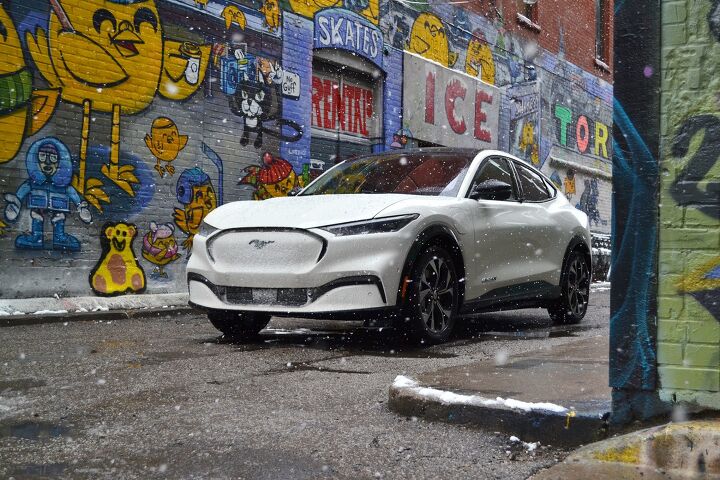

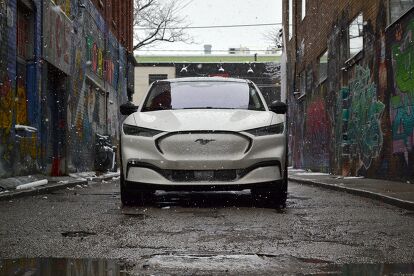














































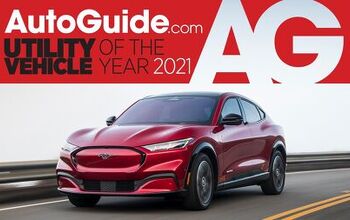
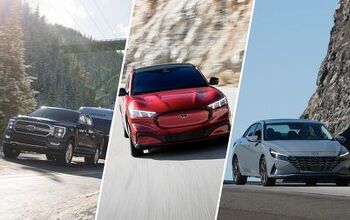
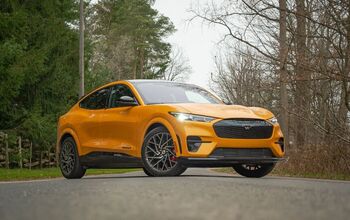

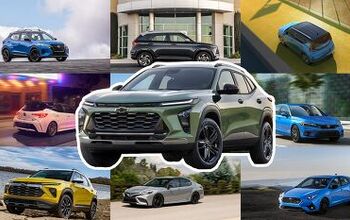



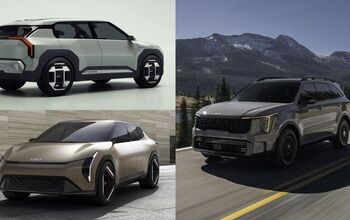





Comments
Join the conversation